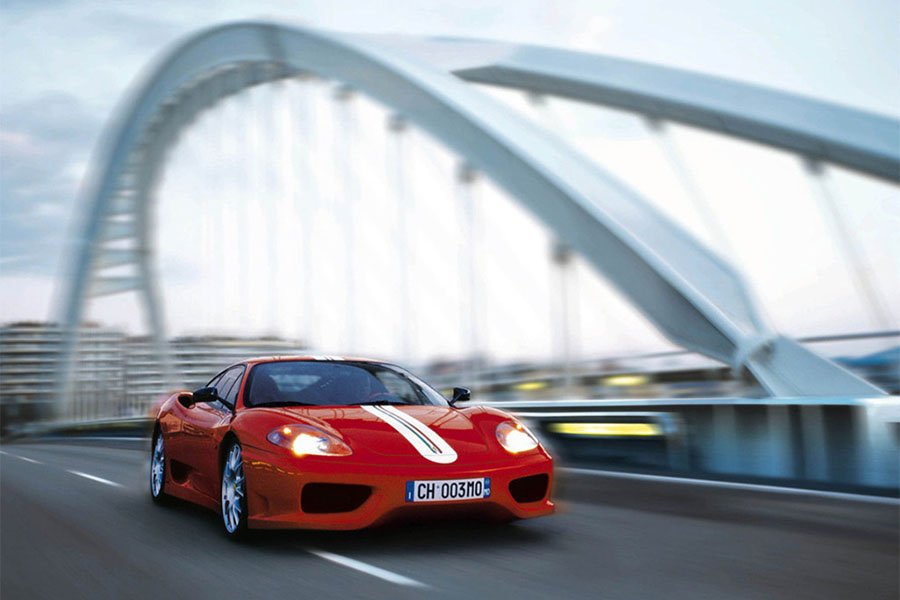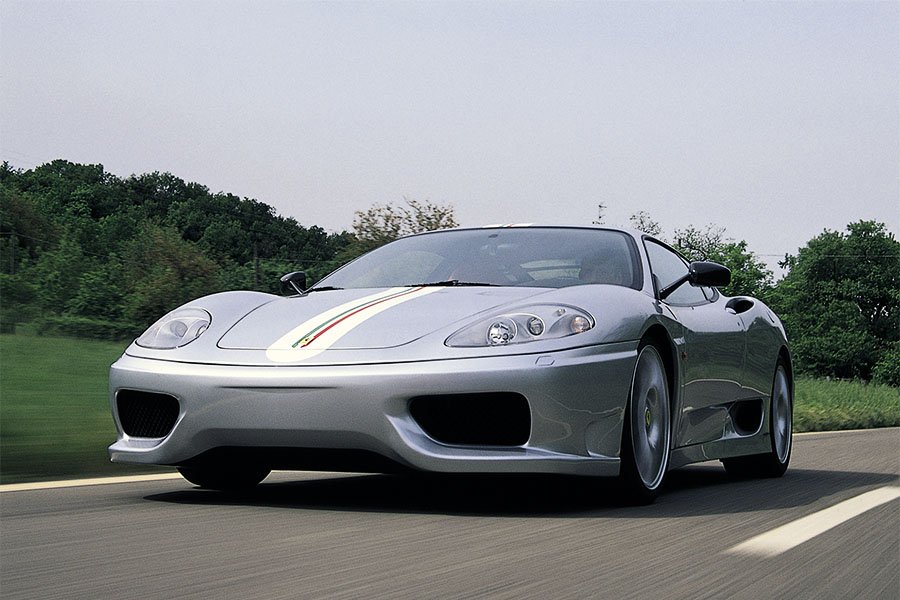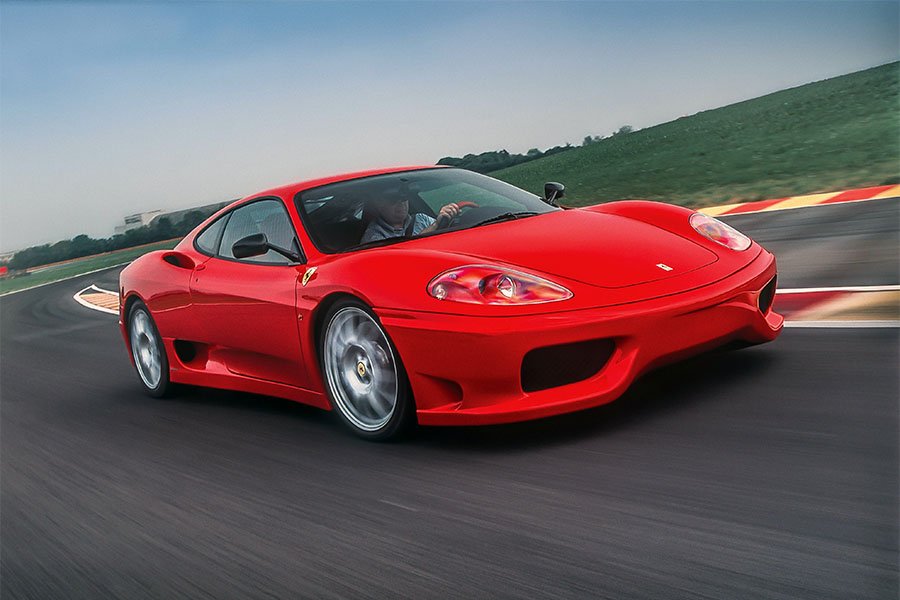Guide: Ferrari 360 Challenge Stradale - a Historical & Technical Appraisal
/BACKGROUND
In conjunction with their technical partner, Michelotto, Ferrari were among the firms that spearheaded the revival of GT racing in the early 1990s.
Competition variants of the F40 and 348 were produced as privateer teams and drivers flocked back to the relatively low-cost GT racing scene during what were troubled economic times. In GT and GTE trim, the F40 had a particularly fine career.
As GT racing continued its inexorable rise towards professionalism during the remainder of the 1990s, the regulations evolved in a manner that convinced Ferrari to abandon any further participation. Tentative plans had been made for an F50 GT1 and a 355 Competizione, but neither programme ever really materialised.
When the premier GT1 category was dropped for the 1999 season, a new format was introduced that saw the old GT2 machinery promoted to become the top class. The previous GT3 category became GT2.
During the 2000 season, several teams began to run uprated versions of the new 360 Challenge one-maker racer in the FIA GT Championship. For the 2001 campaign, Michelotto got involved to supply a proper 360 GT that offered more power, an uprated aero kit and an array of other track-focused enhancements.
After scoring half-a-dozen class wins during the 2001 season and claiming that year’s Drivers’ and Teams’ championships, Michelotto ramped up production, after which Ferrari took over from their in-house Corse Clienti department.
Having subsequently been eclipsed by Porsche after the victorious 2001 campaign, Ferrari decided they wanted to homologate a range of updates for their 2004 season model: the 360 GTC.
With this in mind, a lighter, more powerful and aerodynamically enhanced road car was unveiled at the Geneva Motor Show in March 2003.
Deliveries of the new 360 Challenge Stradale began in October 2003. In standard trim it weighed 110kg less than the regular 360 Modena and, as a result of its myriad upgrades, was a full 3.5 seconds quicker around Ferrari’s Fiorano test track.
Unlike the last time Ferrari had offered such a machine (the 348 GT Competizione road car of 1993-1994, of which the company struggled to sell 50 units), resurgent economies meant Ferrari had no trouble selling a comparatively massive number of 360 Challenge Stradales, despite a substantial price premium over the regular 360 Modena.
CHASSIS
Each Challenge Stradale started life with a Tipo F131 AB extruded aluminium spaceframe chassis from the standard 360 Modena to which a multi-axial carbon floorpan was added. The new floorpan was 50% lighter than before and gave increased rigidity.
The wheelbase was unchanged: 2600mm.
Ferrari enhanced the existing double wishbone suspension arrangement with stiffer springs that were now made of titanium. To keep the suspension geometry well aligned during hard cornering and braking, uprated wishbone, damper and anti-roll bar bushes from the Challenge race car were fitted.
The original rear anti-roll bar was switched to a thicker hollow item that enabled the rear tyres to carry a higher load.
The software for the continually adjusting Sachs dampers was re-mapped. The driver could again select from two modes via a centre console button, but whereas the 360 Modena came with a choice of Sport or Normal settings, this was switched to Sport or Race for the Challenge Stradale.
The dampers themselves were re-rated to provide a 15mm lower centre of gravity.
Instead of 330mm diameter cross-drilled and ventilated steel brake discs, the Challenge Stradale was fitted with Brembo Carbon Ceramic Material items (CCM). The fronts were the same 380mm discs used by the Enzo while those at the back had a 350mm diameter. New aluminium brake carriers were installed along with black-painted four-piston calipers.
The 360 Modena’s 18-inch ‘star’ design wheels were switched over to new 19-inch Challenge-style rims manufactured by BBS. These were secured by titanium bolts and shod with specially created Pirelli P Zero Corsa tyres.
Wheel width was unchanged from the standard model: 8.5-inches up front and 10-inches at the back.
To complement the more reactive suspension set up, the Challenge Stradale’s steering feel was enhanced and the throttle response sharpened.
Duel fuel tanks with a combined 95-litre capacity were imported from the standard 360. They were fitted either side of the engine, up against the rear bulkhead.
ENGINE / TRANSMISSION
At the heart of the Challenge Stradale was an uprated Tipo 131F version of the original Tipo F131B naturally aspirated dual overhead camshaft 90° V8 with its five valves per cylinder, variable valve timing and dry-sump lubrication.
A new low-friction cylinder block plus new heads and pistons enabled Ferrari to increase the compression ratio from 11.0:1 to 11.2:1.
There was also a new intake manifold, revised intake timing and a lightweight low counter-pressure exhaust with valved exit pipes.
Otherwise the engine was much like before. The block, cylinder heads, sump and sundry castings were constructed from light alloy. Connecting rods were titanium. Displacement was 3586cc thanks to a bore and stroke of 85mm and 79mm respectively.
Engine management was via Bosch Motronic 7.3 software and a drive-by-wire throttle was employed.
Peak output went from 394bhp to 419bhp at an unchanged 8500rpm.
The torque rating remained 275lb-ft at 4750rpm.
Unlike the 360 Modena (which could be ordered with a manual or semi-automatic F1 gearbox), the Challenge Stradale was not offered as a traditional manual.
Inside, there was an extended right-hand side shift paddle to make changing up easier when exiting corners. There was also a special reverse button on the centre console and a new launch control facility.
Revised gearbox software was developed to enable faster shift times. The driver could select from two gearbox settings: Sport or Race. Each mode corresponded to an integrated control logic that worked simultaneously with the dampers and traction control settings.
BODYWORK
To increase downforce and thereby allow for much faster cornering speeds, Ferrari fitted the Challenge Stradale with a special aero pack. As per the one-make Challenge racing car, most of these new parts were Resin Transfer Mouldings that weighed much less than the standard equipment.
The front bumper assembly was more aggressively contoured at its lower edge, with particular effect below the gaping air intakes at each corner. The intakes themselves were fitted with new mesh grilles.
The side skirts were made noticeably deeper to smooth airflow around the rear wheels.
At the back of the car, the trailing edge of the rear hatch was given a more pronounced rear spoiler. Four large air vents were located either side of the rear window.
A Challenge rear grille (normally an option on the 360 Modena) was fitted as standard as were Scuderia Ferrari wing shields.
The Challenge Stradale also came with special exposed carbonfibre exterior mirrors.
INTERIOR
To save weight, all the interior carpet was absent along with much of the sound-deadening.
Simple rubber mats were fitted in the footwells.
Instead of leather upholstery, the dash and seats were upholstered in alcantara suede. The seat bolsters and upper dash were normally trimmed to contrast with the seat centres and knee roll.
New door panels were formed entirely from exposed carbonfibre as was the custom centre console.
Customers could choose from sliding Lexan windows or electric glass (a no-cost upgrade).
Carbonfibre racing seats (an option on the 360 Modena) were fitted as standard. Another no-cost upgrade was the choice of four-point harnesses or conventional safety belts. The seats themselves could be specified in either small, medium or large.
In the centre of the instrument binnacle (which came with a carbonfibre fascia) was a special yellow rev counter that read to 10,000rpm. Off to the right was a 340kmh / 220mph speedometer. Underneath the speedo was a digital fuel read out. To the left of the rev counter were a trio of small gauges (water temperature, oil temperature and oil pressure) plus a cluster of warning lights.
Drilled aluminium pedals were provided along with a matching footrest for the passenger.
OPTIONS
In addition to the no-cost options, there was also a long list of extra cost upgrades.
Safety enhancements included a fire extinguisher, a space saver wheel kit and an aluminium roll cage with its upper section trimmed in leather.
Cosmetic enhancements included a tri-colour centre stripe, coloured brake calipers (in Rosso Corsa, Rosso Scuderia, Giallo or Aluminium), Scuderia shield delete, an existing out of range paint colour or paint-to-sample, a coloured upper dash, a coloured steering wheel (either the upper section only or the entire steering wheel), special coloured stitching and a dedication plate.
Comfort options included leather seats, leather headliner, a leather rear bulkhead and lower door mouldings, an audio system with satellite-navigation, an audio system with CD player and a six CD shuttle. Ferrari also offered a range of fitted luggage and a sunroof by special request.
WEIGHT / PERFORMANCE
If configured with alcantara upholstery, Lexan windows and none of the comfort options, the Challenge Stradale tipped the scales at 110kg less than a 360 Modena (1280kg as opposed to 1390kg).
The 0-62mph time was a tenth-of-a-second quicker (4.1 seconds).
Top speed went from 183mph to 186mph.
CORNES 25TH ANNIVERSARY EDITION
In 2004, the Japanese Ferrari distributor, Cornes, ordered a batch of 25 identical specially optioned Challenge Stradales to celebrate their 25th anniversary.
These cars were all painted Rosso Scuderia and equipped with a tri-colour stripe, gold brake calipers, an exposed carbonfibre fuel filler panel, a white rear grille and a commemorative plaque ahead of each rear wheel.
Interiors were red and black alcantara with a white rev counter.
Each car had a passenger door panel signed by Michael Schumacher.
END OF PRODUCTION
Production ended in 2004.
Although Ferrari have never published the precise number of cars built to Challenge Stradale specification, it is understood that around 1300 eventually left the factory.
Text copyright: Supercar Nostalgia
Photo copyright: Ferrari - https://www.ferrari.com




































